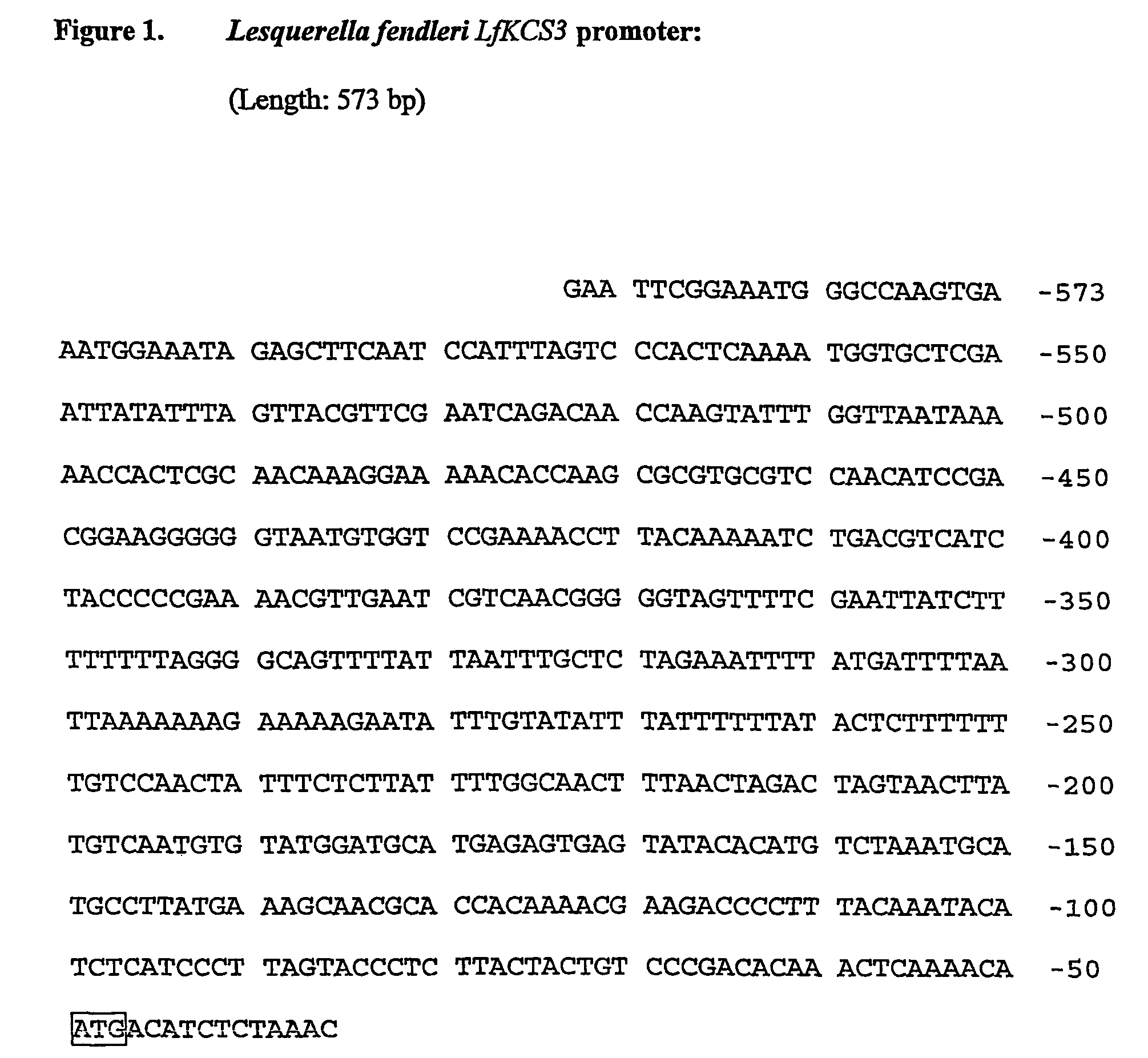Gene regulatory region that promotes early seed-specific transcription
a gene regulatory region and gene technology, applied in the field of nucleic acid sequence, can solve the problems that the promoter of seed storage protein genes may not be ideal for all seed-specific applications, and achieve the effect of promoting high levels of foreign expression
- Summary
- Abstract
- Description
- Claims
- Application Information
AI Technical Summary
Benefits of technology
Problems solved by technology
Method used
Image
Examples
examples
[0017]Isolation of a Seed-Specific Promoter Region form Lesquerella fendleriA Lesquerella fendleri genomic DNA library was obtained from Dr. Chris Somerville, Carnegie Institution of Washington, Stanford, Calif. The genomic library was plated on E. coli LE392 (Promega) and about 150,000 clones were screened using Arabidopsis FAE1 gene (James et al., 1995) as a probe. The probe was prepared by PCR using pGEM7-7Zf(+)-FAE1 (Millar and Kunst, 1997) as a template with FAE1 upstream primer (SEQ ID NO: 2); 5′-CCGAGCTCAAAGAGGATACATAC-3′(SEQ ID NO: 2) and FAE1 downstream primer (SEQ ID NO: 3). 5′-GATACTCGAGAACGTTGGCACTCAGATAC-3′(SEQ ID NO: 3). PCR was performed in a 10 μl reaction containing 10 ng of the template, 2 mM MgCl2, 1.1 μM of each primer, 100 μM of (dCTP+dGTP+dTTP) mix, 50 μCi of [α-32P]dATP, 1×PCR buffer and 2.5 units of Taq DNA polymerase (Life Technologies). Amplification conditions were: 2 min of initial denaturation at 94° C., 30 cycles of 94° C. for 15 sec, 55° C. for 30 sec,...
PUM
| Property | Measurement | Unit |
|---|---|---|
| nucleic acid | aaaaa | aaaaa |
| time | aaaaa | aaaaa |
| lipid composition | aaaaa | aaaaa |
Abstract
Description
Claims
Application Information
 Login to View More
Login to View More - R&D
- Intellectual Property
- Life Sciences
- Materials
- Tech Scout
- Unparalleled Data Quality
- Higher Quality Content
- 60% Fewer Hallucinations
Browse by: Latest US Patents, China's latest patents, Technical Efficacy Thesaurus, Application Domain, Technology Topic, Popular Technical Reports.
© 2025 PatSnap. All rights reserved.Legal|Privacy policy|Modern Slavery Act Transparency Statement|Sitemap|About US| Contact US: help@patsnap.com

